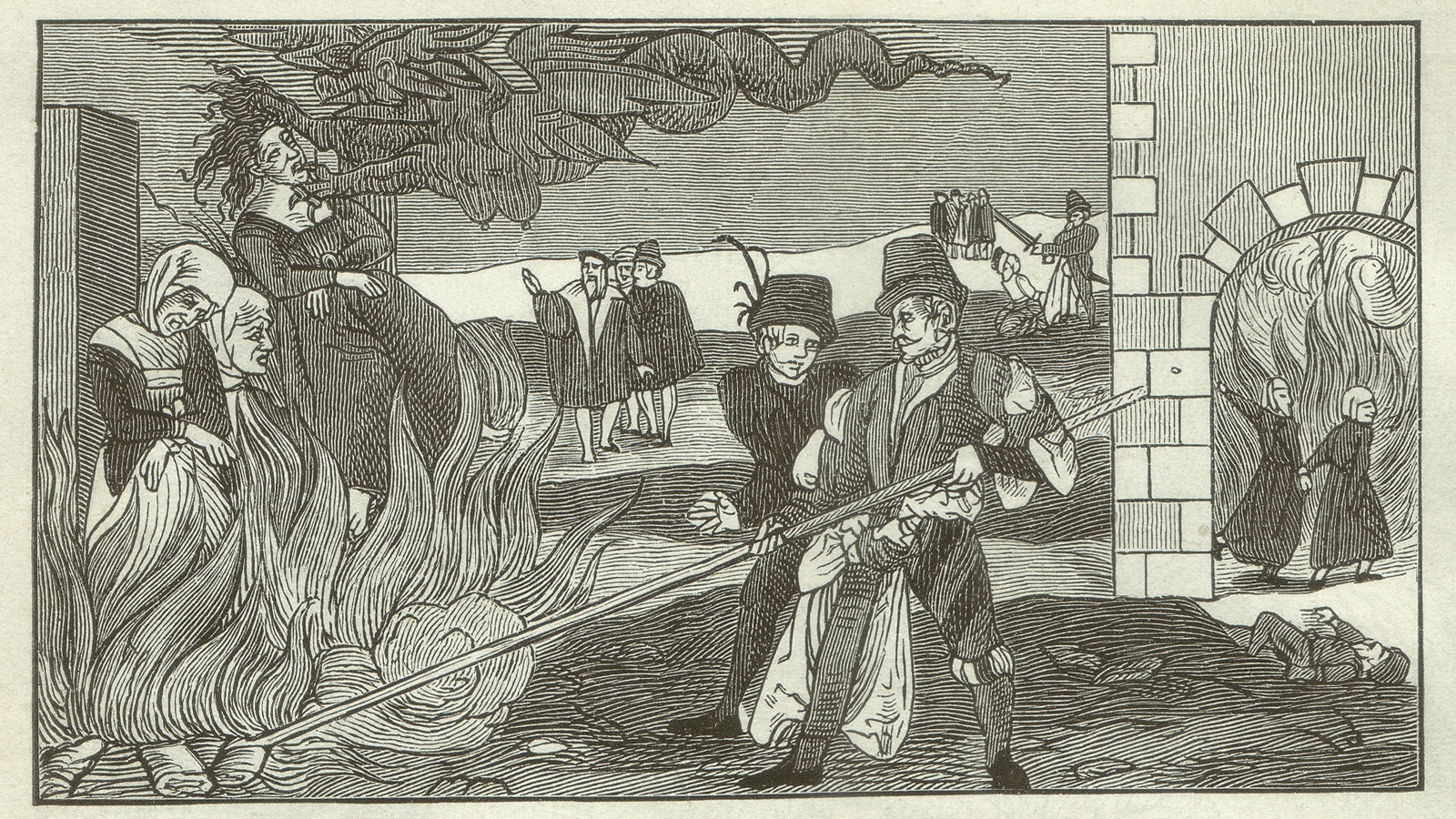Robert St. George, Associate Professor of History, researches and teaches early American cultural history, witchcraft in the early modern world, public culture, American vernacular architecture, performing history, and American consumer culture.
How is witchcraft imagined in different Western cultures?
From the late 15th century through the late 20th century, there have been believers in witchcraft and skeptics who have set out to show that it’s no more than mere juggling, a duplicitous trick.
Witchcraft is considered a voluntary thing—you have to sign the Devil’s book upside down with your pricked finger, or there can be reverse baptisms. There can be the trampling of emblems of Christ, the cross on the ground, and all this kind of thing. People that are possessed, however, never have to make a contract. That’s an involuntary occupying of their body by the Devil.
In the case of Salem, there were both people who supposedly signed a Devil’s book, and then there were other people who were possessed. In England, as well as in New England, when somebody’s possessed, ministers and deacons usually prayed with them, thinking that that will drive the spirit out. Protestants wouldn’t use crosses, they didn’t use unguents or anything like you saw in The Exorcist, which featured a Catholic priest showing crosses and sprinkling holy water.
There is also a difference in how witchcraft is punished in Protestant and Catholic countries. In Protestant countries, an accusation of witchcraft was considered a criminal violation of civil law, so hanging was the punishment. In Catholic countries—France, Italy, Germany—it was considered heresy by canon law, so people were burned at the stake. So that’s why in England and the U.S., accused witches were not burned.
What makes all these different places ripe for an outbreak of accusations?
I talk about it as an Old World regime yielding to a new kind of modern, pro-capitalist world. When a way of life begins to fade, witchcraft seems to happen. Think of astrology and the zodiac versus a new scenario where the body is conceived of as having its own natural system. Nobody’s really tied to the heavens. Witchcraft occurs as a kind of hinge between these ways of thinking. There is an interregnum where we’re not sure what will happen, and accusations of witchcraft occur.
How did popular understandings of witchcraft come to be, and are any of those misleading?
Some symbols of witchcraft come from people or practices who were long demonized by Christians. They become this projected “other” that is demonized. There are so many representations of witchcraft. Broomsticks come from way before Harry Potter. There is a French manuscript from 1435 that shows a woman, a man, and an animal riding on a broomstick. A 1530 manuscript shows witches riding on forked sticks.
There has been recent scholarly attention to men accused of witchcraft. The idea that only women were accused —I think that was a bias that male scholars confirmed in their research. So, for example, in Iceland, there was a big outbreak in the 1650s and ‘60s and uniformly it was men who were accused by other men and by leading women citizens. Men being accused of witchcraft is probably more common in Nordic records, but we see it in England as well.




